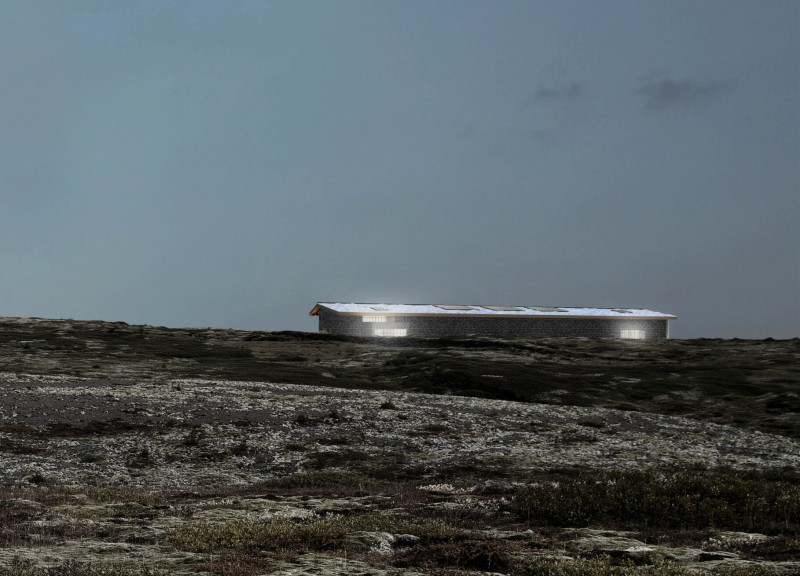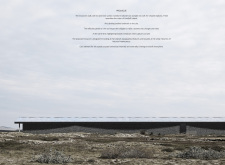5 key facts about this project
The museum dedicated to Iceland's volcanic landscapes serves as a space for education and cultural appreciation. It is positioned in a region rich with dramatic geological features, allowing for a thoughtful engagement with the environment. The design aims to create an experience that connects visitors with Iceland's unique topography by making strong use of light and shadow throughout the building.
Use of Light and Shadow
Dark brick walls play a central role in the museum's design, turning low sunlight into soft shadows that reference the crater of Hverfjall. This interaction with natural light creates a link between the building and its location, making the atmosphere change throughout the day. The roof incorporates reflective panels that also help to distribute light, producing a varied visual experience as visitors move through the interiors.
Spatial Organization
A grid layout influenced by archeological excavation techniques structures the museum. This square plan offers order while inviting exploration. The layout not only serves practical purposes but also allows the design to reflect the geographical features of the site. Visitors can find themselves surrounded by elements of Iceland’s nature, framing their journey through the space in a meaningful way.
Interior Ambiance
The ceiling features a grid design that significantly affects the atmosphere of the museum. Three floating volumes capture light from the roof, casting soft illumination across the interior. This is complemented by the walls of the exhibition spaces, creating a transition between indoor and outdoor settings. The design promotes easy movement for visitors, encouraging a natural flow of air and light that enhances their overall experience.
Connection to the Environment
Exhibitions within the museum are planned as temporary installations yet are set within a permanent structure that connects the building to its landscape. References to volcanic terrains in the design materials create a strong bond with the surroundings. Visitors can engage with the layout and appreciate the specific characteristics of the environment as they explore the exhibitions.
The design concludes with a series of carefully framed views that encourage reflection on the surrounding landscape, highlighting the relationship between the museum and the natural environment. The experience in this space aims to deepen the understanding of the volcanic forces that shaped Iceland.






















































